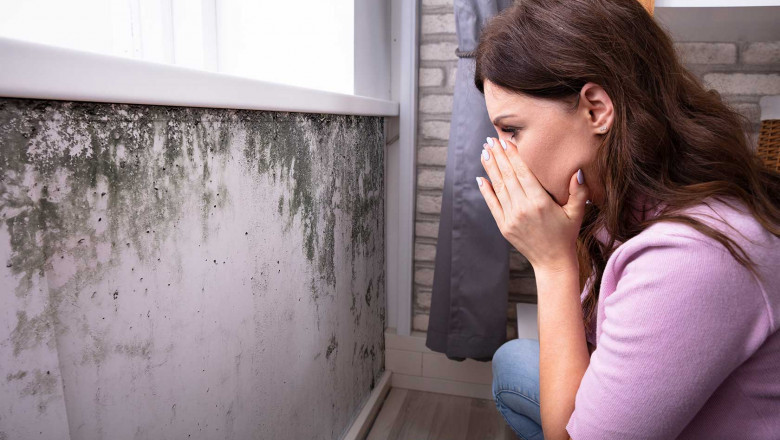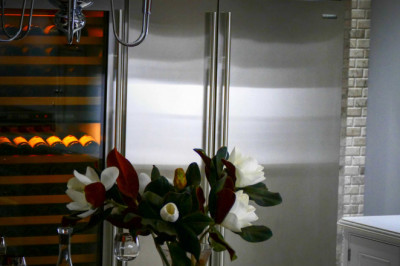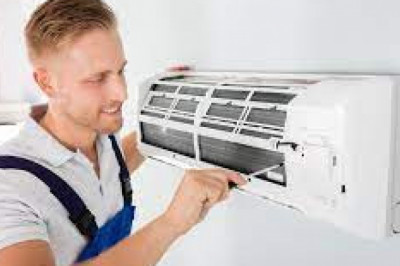views

The best way to prevent mold is early detection and remediation. And in this post, we will list out a few places you should start searching from.
In showers and bathtubs: Showers and Bathtubs are more likely to develop mold than other reasons. This is mainly because of the presence of moisture in the space. Since both showers and bathtubs see a large amount of water every day, the moisture levels are high. And when the humidity doesn't dry out completely, the chances of mold growth increase exponentially. This can cause discoloration of tiles and a massive mold outbreak in the near future. The best way to stop mold development in bathtubs and showers is to build proper ventilation in the room.
The sink and toilet: The sink and toilet are the other two places in your home that are susceptible to mold growth. This is because they are constantly moist and see a lot of traffic. To prevent mold, it's essential to keep these areas clean and dry as much as possible. You can do this by using a disinfectant after every use and ensuring that the surfaces are dried off properly.
Behind appliances: Appliances like refrigerators, ovens, dishwashers, etc., often have many nooks and crannies that can be difficult to clean properly. And when these areas aren't cleaned regularly, they become perfect breeding grounds for mold spores. So if you're having trouble getting rid of the mold in your home, start by cleaning behind your appliances.
In the basement: Basements are often damp and dark, making them the perfect place for mold to grow. This is because basements see a lot of moisture from the ground and don't get a lot of natural light. To prevent mold in your basement, it's essential to install proper ventilation and keep it well-lit. You can also use a dehumidifier to reduce the amount of moisture in the air.
In the walls and on the floor: If you're having a hard time finding mold in your home, it's probably because it's hidden in the walls or on the floor. Mold often grows behind furniture or inside of walls where it's difficult to see. The best way to find hidden mold is by using a flashlight and inspecting all of the nooks and crannies in your home.
In and around the kitchen sink: The kitchen sink is common for mold to grow because it's constantly moist and has a lot of organic material. You can prevent mold in this area by using a disinfectant after every use and making sure the surfaces are dried off properly.
Check your mattress: Mold can also grow on your mattress, especially if it's made of cloth. This is because mattresses often don't get a lot of air circulation and become damp over time. If you're having trouble getting rid of the mold in your home, start by checking your mattress for any signs of growth.
Couch and curtains: Mold can also grow on furniture and curtains, especially if they're made of cloth. This is because the fabric provides a lot of moisture and darkness. To prevent mold from growing on your furniture, it's essential to keep them dry and well-lit. You can also use a disinfectant to kill any existing spores.
Fireplace and Chimney: Fireplaces and chimneys are common places for mold to grow. This is because they see a lot of moisture from the fire and don't get a lot of air circulation. To prevent mold in this area, it's essential to install proper ventilation and keep it clean. You can also use a dehumidifier to reduce the amount of moisture in the air.
Attic: The attic is another place in your home that's susceptible to mold growth. This is because the attic often sees a lot of moisture from the roof and doesn't get a lot of natural light. To prevent mold in your attic, it's essential to install proper ventilation and keep it well-lit. You can also use a dehumidifier to reduce the amount of moisture in the air.
Air conditioning and HVAC Systems: Air conditioning and HVAC systems are other places in your home that are susceptible to mold growth. This is because the AC unit often sees a lot of moisture from the air and doesn't get a lot of natural light. To prevent mold outgrowth in your HVAC systems, it's best to clean your air ducts once every few years.
Mold spores can grow anywhere there is moisture and organic material. So if you're having trouble getting rid of the mold in your home, start by checking these common areas for any signs of growth. Remember, prevention is always better than cure, so be sure to take steps to prevent mold from growing in the first place. You can do this by using a dehumidifier to reduce the amount of moisture in the air, keeping your home well-lit and dry, and installing proper ventilation. If you find mold in your home, be sure to take steps to get rid of it as soon as possible. For more information on how to get rid of mold, consult a professional.












